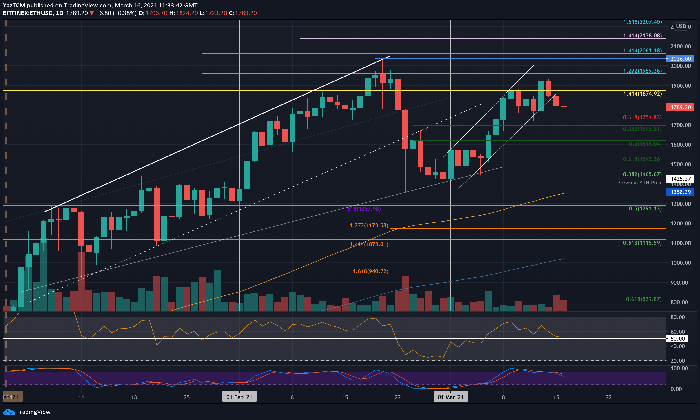US stablecoins are rapidly gaining attention as a viable alternative for cross-border payments, particularly among European users. Italy’s Minister of Economy and Finance, Giancarlo Giorgetti, recently highlighted their potential to challenge the euro’s dominance in international transactions. His remarks underscored the urgency for European lawmakers to address the implications of these dollar-backed digital assets on financial stability. As the European Central Bank works on the digital euro, the need for robust stablecoin legislation has never been more pressing. Giorgetti’s warnings suggest that while trade tariffs pose risks, the policies overseeing US stablecoins may represent an even greater threat for the eurozone.
In the evolving landscape of digital currencies, dollar-pegged cryptocurrencies, or US stablecoins, are poised to reshape traditional financial systems, particularly in Europe. These crypto assets, which offer a seamless way of conducting cross-border transactions, have prompted calls from European officials to reinforce the euro’s position in the global market. As the European Central Bank pushes forward with the digital euro initiative, it underscores the importance of regulatory measures, including comprehensive legislation around digital currencies. This situation reflects the broader struggle for monetary sovereignty as European nations seek to mitigate reliance on American financial solutions. Addressing these challenges is crucial to ensure that European users can enjoy the benefits of digital innovation without compromising their financial stability.
The Growing Threat of US Stablecoins to European Financial Stability
The emergence of US stablecoins poses a significant challenge to the financial stability of Europe. According to Italy’s Minister of Economy and Finance, Giancarlo Giorgetti, the allure of these dollar-backed cryptocurrencies to European users should not be underestimated. US stablecoins provide an avenue for cross-border payments and investments without the necessity of opening a US bank account. This ease of access makes them a competitive alternative to traditional banking methods for European consumers, potentially undermining the euro’s longstanding dominance in international finance.
Furthermore, Giorgetti raises concerns about the regulatory disparity between the US and Europe, with fragmented stablecoin legislation in the US creating an environment ripe for rapid adoption. As European users gravitate towards these stablecoins, there is a real risk that the euro could be marginalized in global transactions. The implications of this shift are profound, as they could jeopardize European monetary sovereignty and impact the overall stability of the eurozone’s economy.
The Role of the Digital Euro in Strengthening Europe’s Financial Position
In response to the rising challenge posed by US stablecoins, the European Central Bank (ECB) is in the process of developing the digital euro. This digital currency aims to bolster the euro’s status as a central international currency, enabling European users to perform cross-border payments seamlessly. By providing a domestic alternative to US stablecoins, the digital euro intends to diminish reliance on foreign financial solutions, thereby maintaining the eurozone’s economic independence and stability.
The digital euro represents a crucial step for Europe in sustaining its competitive edge against dollar-backed cryptocurrencies. With advancements in technology and increasing consumer demand for digital finance solutions, the ECB’s push for a digital euro aims to ensure that Europe remains at the forefront of global financial innovation. By positioning the digital euro as a viable alternative, European authorities hope to protect the euro’s influence in international trade and reinforce the monetary sovereignty of member states.
Regulatory Measures for Stablecoins: Lessons from the US
As Europe contemplates its response to the rise of US stablecoins, the regulatory landscape in the United States provides valuable lessons. Currently, the US operates under a fragmented stablecoin regulatory framework, where various agencies apply existing laws inconsistently. However, significant efforts are underway to create comprehensive legislation, such as the Stablecoin Transparency and Accountability for a Better Ledger Economy (STABLE) Act, which addresses critical issues around consumer protection and financial transparency.
European lawmakers can draw insights from these developments as they formulate their own stablecoin regulations. Establishing a cohesive regulatory framework could help protect consumers while simultaneously fostering innovation within the eurozone. By learning from the experiences of US legislation, Europe can better prepare for the challenges posed by stablecoins and ensure that the euro maintains its pivotal role in cross-border payments and international finance.
The Importance of Legislative Action to Maintain Euro Dominance
To counter the potential threat from US stablecoins and bolster the euro’s position in the global market, legislative action in the European Union is essential. Lawmakers need to prioritize the development of policies that enhance the euro’s appeal and address the growing competition from dollar-backed cryptocurrencies. By implementing proactive measures, the EU can solidify the euro’s status as a leading international currency.
With calls for strengthening the regulatory framework surrounding stablecoins, legislators have an opportunity to create a more resilient financial ecosystem within Europe. This can include initiatives aimed at promoting financial literacy related to digital currencies and encouraging the adoption of the digital euro, ensuring that consumers understand their options and the implications of their choices in a rapidly evolving financial landscape.
Cross-Border Payments: The Future of Euro and Dollar Transactions
As the global economy becomes increasingly interconnected, cross-border payments have emerged as a critical area of focus for financial authorities. The rise of US stablecoins has introduced an alternative method for conducting international transactions, prompting the need for European entities to assess their current payment systems. This re-evaluation is crucial in improving the efficiency and reliability of cross-border payments, ensuring that the euro remains competitive.
The future of cross-border payments will likely involve a blend of traditional monetary systems and innovative solutions such as stablecoins and central bank digital currencies (CBDCs). By fostering faster, more cost-effective payment options, the EU can enhance user experience and encourage the continued use of the euro in international trade. Ultimately, this evolution will be determined by the collaborative efforts of regulatory bodies, financial institutions, and industry stakeholders.
Consumer Perspectives on US Stablecoins vs. Digital Euro
From a consumer perspective, the appeal of US stablecoins often lies in their perceived accessibility and utility, particularly for international transactions. Users appreciate the speed and lower fees associated with dollar-backed stablecoins compared to traditional banking methods. However, as European consumers become more aware of the implications of using US stablecoins, there is a growing discussion around the benefits of adopting a digital euro.
The digital euro could serve as an attractive alternative for European users, offering the same convenience as US stablecoins while ensuring compliance with local regulations and consumer protections. By emphasizing the advantages of the digital euro, including enhanced security and lower transaction costs, European authorities have the opportunity to reshape consumer preferences in favor of a homegrown solution that maintains the integrity of the eurozone’s economic framework.
Legislative Initiatives to Enhance the Euro’s Role in Global Finance
To ensure the euro retains its prominence in global finance, European legislators need to prioritize comprehensive initiatives that address the challenges posed by US dollar-backed stablecoins. Efforts to create robust stablecoin legislation that emphasizes transparency, consumer protection, and interoperability with other financial systems are vital. These actions will not only safeguard the interests of European consumers but also reinforce the euro’s status as a credible alternative to the dollar.
Additionally, by investing in the development of digital financial infrastructures that support the euro, the EU can establish itself as a hub for innovation in the cryptocurrency sector. Initiatives such as partnerships with fintech firms and collaborations between central banks can foster an environment conducive to the growth of the euro as a global currency.
The European Central Bank’s Strategy to Counteract US Dollar Influence
The European Central Bank (ECB) plays a pivotal role in devising strategies to counteract the increasing influence of US dollar-backed stablecoins. ECB officials, including Piero Cipollone, advocate for the development of a central bank digital currency (CBDC) that would provide a secure and efficient means of payment while protecting the euro’s monetary sovereignty. By offering a digital euro, the ECB aims to enhance the eurozone’s economic resilience against external financial pressures.
Central bank digital currencies represent not only a response to the competitive landscape dominated by US stablecoins but also a proactive approach to fostering public trust in digital finance. The ECB’s efforts in developing a digital euro will address the evolving needs of consumers while positioning the euro as a leading player in the future of global currency transactions.
Future Outlook: The Euro vs. US Stablecoins in International Trade
Looking ahead, the competition between the euro and US stablecoins in international trade will likely intensify. European stakeholders must remain vigilant and responsive to the changing dynamics of digital currencies and cross-border payments. The increasing adoption of US stablecoins by European users necessitates a robust regulatory framework that can adapt to evolving market conditions while preserving the euro’s prominence in global finance.
As efforts to launch the digital euro progress, it will be crucial for Europe to communicate the unique benefits of its central bank digital currency. Through education and outreach, policymakers can help consumers understand how the digital euro can facilitate international transactions while ensuring compliance with regulations and enhancing financial security. In this evolving landscape, the balance of power between the euro and US dollar-backed stablecoins will depend on the strategic choices made by European leaders in the coming years.
Frequently Asked Questions
What is the impact of US stablecoins on euro dominance in cross-border payments?
US stablecoins pose a significant threat to euro dominance in cross-border payments, as they offer a convenient and globally accepted alternative for transactions without requiring a US bank account. The increasing use of these dollar-backed stablecoins by European users could undermine the euro’s position as a leading currency for international payments.
How is stablecoin legislation evolving in the United States?
The regulatory framework for US stablecoins is currently fragmented, with various agencies overseeing compliance. However, ongoing efforts such as the STABLE Act and the GENIUS Act aim to create comprehensive stablecoin legislation that addresses reserve requirements, consumer protection, and compliance with Anti-Money Laundering laws, thus shaping the future landscape for US stablecoins.
What role does the European Central Bank play in addressing the rise of US stablecoins?
The European Central Bank (ECB) is actively involved in countering the influence of US stablecoins by developing the digital euro. This central bank digital currency is designed to enhance the euro’s status and reduce dependence on foreign digital assets, ensuring monetary sovereignty for the eurozone.
Why is the digital euro important in the context of US stablecoins?
The digital euro is crucial as it aims to provide a competitive alternative to US stablecoins, helping to maintain euro dominance in international transactions. By offering a central bank-backed solution, the ECB seeks to mitigate the risks posed by dollar-backed stablecoins and strengthen the euro’s role in cross-border payments.
What are the concerns policymakers have regarding US stablecoins?
Policymakers express concerns that US stablecoins could destabilize European financial systems, drawing European users away from the euro and impacting international trade. The appeal of these crypto assets as an effective payment method emphasizes the need for regulatory frameworks to address their influence.
How does the STABLE Act relate to US stablecoins?
The STABLE Act is a key piece of legislation that aims to establish guidelines for US stablecoins, ensuring improved transparency and accountability among issuers. By advancing stablecoin legislation, lawmakers seek to regulate the market effectively and protect consumers, while enhancing the global dominance of the dollar.
What measures are European lawmakers considering in response to US stablecoins?
European lawmakers, responding to the challenges posed by US stablecoins, are considering developmental strategies such as the launch of the digital euro to bolster the euro’s competitive edge and reduce reliance on dollar-based alternatives in cross-border payments.
How do US stablecoins facilitate cross-border payments for Europeans?
US stablecoins facilitate cross-border payments for Europeans by providing a widely accepted and accessible payment method that eliminates the need for traditional banking systems. This convenience allows users to transact globally while minimizing transaction costs and time delays.
| Key Points |
|---|
| US stablecoins are appealing to Europeans and pose risks to the euro’s cross-border payment dominance. |
| Italy’s Minister of Economy emphasizes that US stablecoin policies may be a greater threat to Europe than trade tariffs. |
| New US rules for dollar-backed stablecoins could disrupt European financial stability and are being discussed in Congress. |
| The European Central Bank is developing a digital euro to enhance the euro’s status and reduce dependence on US stablecoins. |
| Legislation like the STABLE Act and GENIUS Act is aimed at establishing a regulatory framework for US stablecoins. |
| EU officials encourage measures to strengthen the euro against the influence of US stablecoins. |
Summary
US stablecoins are increasingly becoming a focal point of concern among European officials, particularly regarding their potential impact on the euro and cross-border transactions. As highlighted by Italy’s Minister of Economy and Finance, Giancarlo Giorgetti, the growing prominence of US stablecoins underscores the necessity for the European Union to enhance euro policies and consider the advancement of a digital euro. With ongoing legislative initiatives in the United States, the landscape for stablecoins is evolving, making it imperative for Europe to adapt strategies to safeguard its financial ecosystem.
US stablecoins are gaining traction among European investors, presenting both opportunities and challenges for the global financial landscape. As Italy’s Minister of Economy and Finance, Giancarlo Giorgetti, recently warned, the implications of these dollar-pegged digital currencies stretch beyond mere financial innovation; they threaten the euro’s dominance, especially in the realm of cross-border payments. With the regulatory environment in the US still evolving, and various proposals for stablecoin legislation on the table, European authorities must respond proactively. The forthcoming digital euro, being developed by the European Central Bank (ECB), aims to mitigate reliance on foreign currency solutions and promote the euro as a primary international currency. As this financial rivalry develops, the dynamics between US stablecoins and traditional European currency will be critical to watch, particularly given the increasing global emphasis on digital assets.
In recent discussions surrounding financial innovations, the rise of dollar-backed digital currencies, commonly referred to as US stablecoins, has notable implications for the European economy. These crypto assets, designed to maintain a stable value against the US dollar, are beginning to attract significant attention from European users, largely because of their ease of access for cross-border transactions. In light of regulatory considerations, including potential stablecoin legislation in the United States, European policymakers are urged to strengthen the framework surrounding the digital euro. The European Central Bank is currently exploring a central bank digital currency that could bolster the euro’s standing on the global stage. As the competition between these financial instruments evolves, maintaining monetary sovereignty and enhancing euro dominance will remain a strategic priority.














